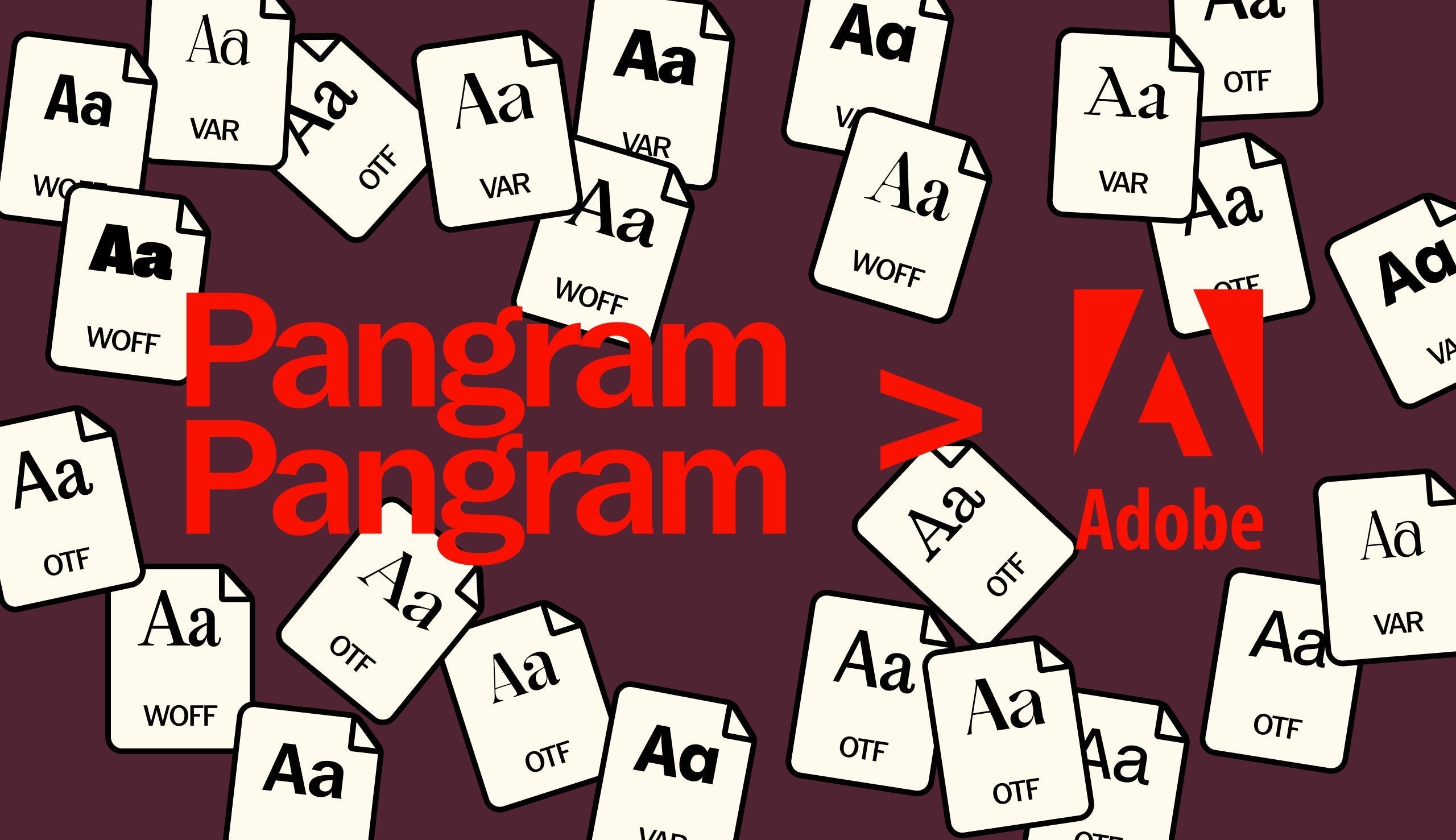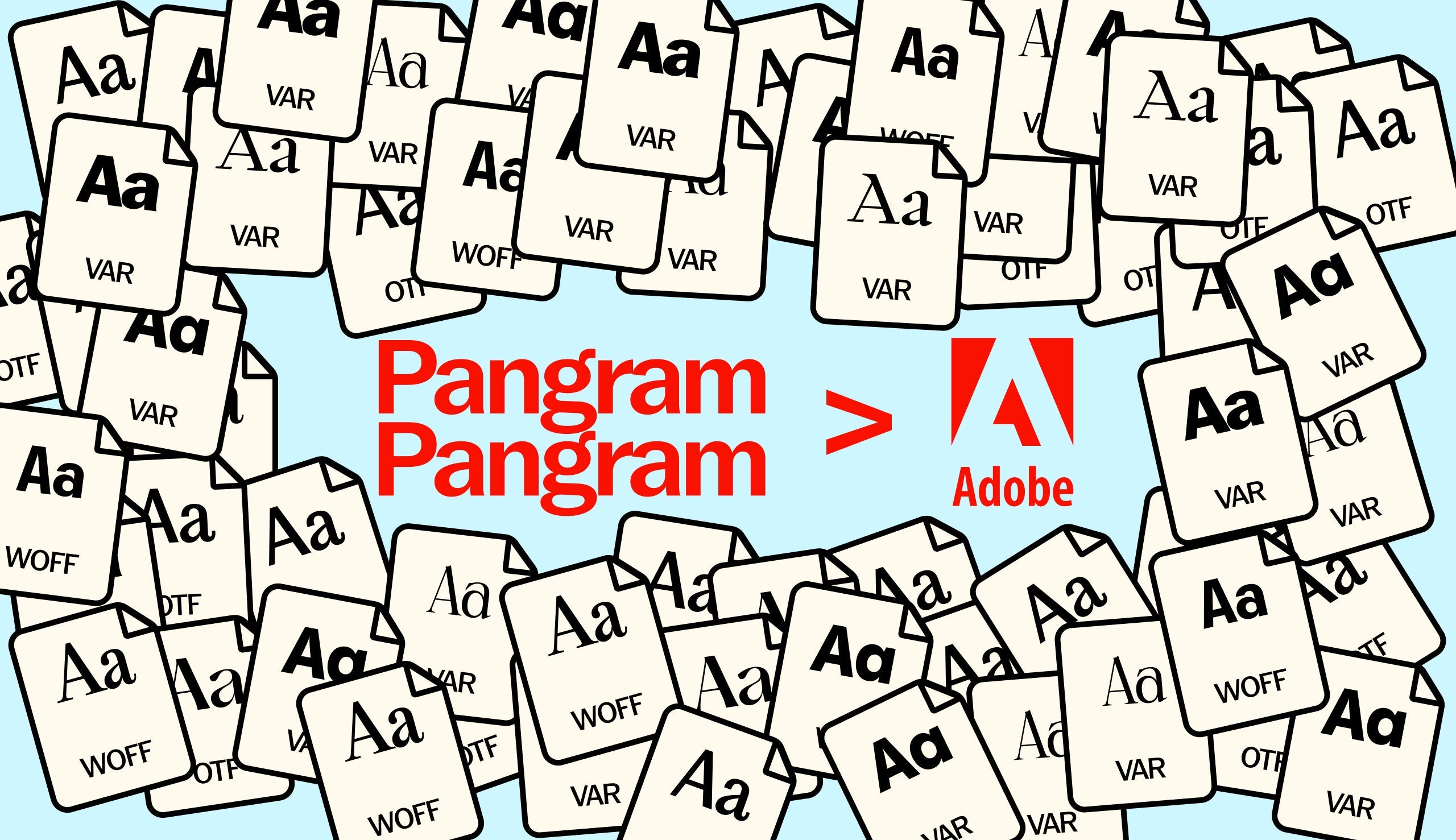When you use a well-designed app or browse a clean, easy-to-read website, you might not consciously notice the font. And that’s the point.
In UX design, typography is successful when it’s invisible, creates hierarchy, and evokes a brand's personality without shouting it. Choosing the right typeface is an act of architecture. It can clarify navigation, make reading feel effortless, and elevate the entire user experience.
Why Typography Is Crucial to UX
Typography is the backbone of interface design. Most of the information users consume in digital products is text. A good UX designer considers how users read, not just what they read. A few things to consider are readability, hierarchy and tone.

1. Readability
Readability is about how easily your users can consume content. Are the letterforms clear? Is the spacing generous enough? Does the font hold up at small sizes?
For example, Editorial New is crafted for reading at length. It offers just enough flair to keep the eye moving, without overwhelming the user.
2. Hierarchy and Navigation
UX relies heavily on hierarchy to distinguish headers from body text, navigation items from button labels, etc. We recently wrote an extensive article on the subject, but it’s still a good point to keep in mind when choosing the font for your UX/UI.
Look at Monument: a brutalist grotesque with a massive range of weights, from razor-thin to ultra-heavy. That range gives you the tools to create clean hierarchies within one font family, avoiding the messiness of mixing too many typefaces.
3. Tone and Brand
Fonts have voices. Some shout. Some whisper. Some are sarcastic, formal, whimsical, or dead serious. Choosing a font is a way of saying who your product is for and how it wants to be perceived.
Pangram Sans Rounded Collection, for example, is approachable, cheerful, and playful. This makes it ideal for a wellness app, children's platform, or casual service.
What to Look For in a UX-Friendly Font
The best UX typefaces are engineered for performance. When evaluating a font for a digital product, here’s what to look for.

1. Legibility Across Sizes
The font needs to work from 12px labels to full-screen headlines. Look for fonts with sturdy x-heights, open apertures, and generous spacing.
Our own Right Grotesk Collection is a stellar example. Its letterforms remain clear even in dense layouts, and it offers optical sizes tailored to both display and text usage.
2. Wide Language Support
Global products need fonts that can handle multiple languages, diacritics, and scripts. Most Pangram Pangram and Off-Type fonts offer Latin Extended character sets, with some even offering Cyrillic and Greek like Neue Montreal, Japanese like Kyoto and Neue Montreal Arabic that offers Arabic!
3. Variable Fonts
Variable fonts are one of the most exciting advances in web typography. Instead of loading separate font files for Light, Regular, Bold, etc., variable fonts contain all weights in a single file. This reduces load time and allows for fine-grained control over weight, width, and sometimes even slant.
Matching Type to UX Use Cases
Like pairing a wine with an amazing dish, not all fonts are suited for all use cases. Here's how you can match Type with application.

1. Mobile Apps
Mobile interfaces have limited screen real estate and demand fonts that are compact, legible, and flexible, like our brand new Frama : a clean neo-grotesk neutral and dependable.
2. E-commerce Sites
You want a font that builds trust, keeps the interface clean, and helps users scan product listings quickly.
For example, Telegraf is professional and clear with a slightly humanist touch. Great for tech or luxury retail.
3. Finance, Legal, or Healthcare Platforms
These require a tone of reliability, calm authority, and clarity.
Neue Montreal Mono is a monospaced font that looks great in dashboards and forms.
4. Creative or Cultural Platforms
Here, expression and personality are crucial. The typeface becomes part of the experience. A bit of flair like in Fragment, which is sophisticated yet minimalist, is great for portfolios, galleries, or music apps.
Microtypography: The UX Designer’s Secret Weapon
Beyond the choice of font, small typographic decisions have a big impact on UX.

1. Line Length and Spacing
Aim for 50–75 characters per line for body text. Shorter lines reduce eye fatigue. Adjust line height (leading) for mobile screens — around 1.4 to 1.6x the font size.
2. Contrast and Color
Ensure adequate contrast between text and background. Avoid placing thin fonts over busy imagery. Tools like WebAIM Contrast Checker help maintain accessibility.
3. Letter-Spacing and Weight
Tight tracking looks modern but harms legibility at small sizes. Keep things slightly loose for readability. And remember: Bold isn’t always better. Medium weights often offer better optical balance on screens.
Why You Should Use Font Families
One of the best ways to future-proof your UX typography is to invest in a versatile type system like a font family with enough weights and styles to cover every use case from buttons to blog posts.

Here are a few worth building your whole product around:
Neue Corp
It’s a workhorse of the Pangram library. Think Helvetica’s Swiss neutrality with a bit more warmth. It works for paragraphs, nav bars, and hero text alike. Available in static and variable formats.
Editorial New / Editorial Old / Editorial Sans
Perfect for content-rich platforms or apps with a strong editorial presence. Combines refined elegance with screen-optimized performance, and comes in three distinct styles for versatility AND coherence.
Monument
Monument balances power with precision across any interface. Its expanded 2025 update—featuring five widths and nine weights—gives you unmatched control to create clear, commanding, and cohesive digital experiences.
UX Typography Pitfalls to Avoid
Design is personal, but it's always good to have a place to start, a best practice, before adding your personal touch.

1. Too Many Fonts
Limit your UI to one or two font families. Mixing too many creates visual noise. Use weights, styles, and sizes to establish hierarchy within a single system.
2. Over-Stylized Fonts in UI
Fancy display fonts are for hero banners or campaign pages. Don’t use ultra-decorative fonts for body text or navigation.
3. Not Testing on Real Devices
Fonts behave differently on Retina vs. standard displays, mobile vs. desktop, and Chrome vs. Safari. Always test across environments..
TL;DR
Choosing a typeface for your digital product isn’t just about what looks good — it’s about designing how your users feel and behave. Fonts shape attention, build trust, signal brand voice, and either support or sabotage the usability of your product.
Next time you open Figma or Sketch, don’t just pick a font because it’s trendy or pretty. Ask yourself: will this typeface help someone read, decide, click, buy, or learn?
If the answer is yes, you’re on your way to great UX.
Try them out!
You can test all the fonts mentioned in this article by getting our Font Starter Pack or get your free trials here!







